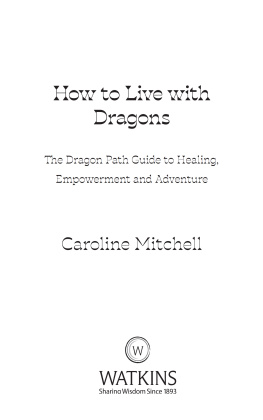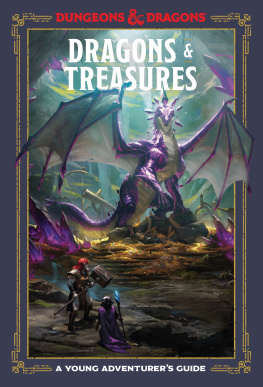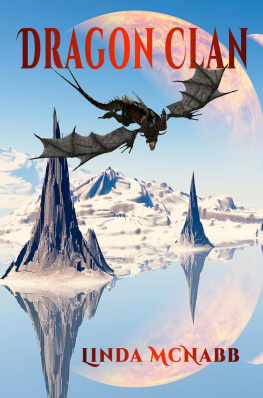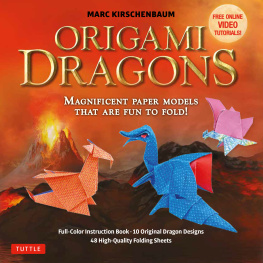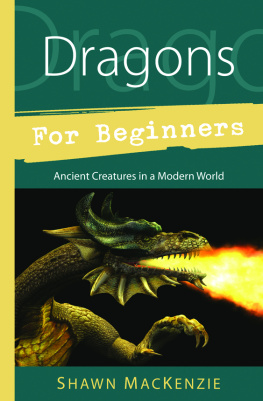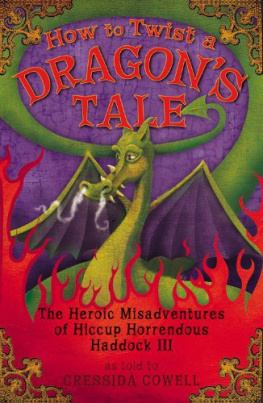

Published by
World Scientific Publishing Co. Pte. Ltd.
5 Toh Tuck Link, Singapore 596224
USA office: 27 Warren Street, Suite 401-402, Hackensack, NJ 07601
UK office: 57 Shelton Street, Covent Garden, London WC2H 9HE
Library of Congress Cataloging-in-Publication Data
Names: Knoepfler, Paul, 1967 author. | Knoepfler, Julie, author.
Title: How to build a dragon or die trying : a satirical look at cutting-edge science /
Paul Knoepfler (University of California, Davis, USA),
Julie Knoepfler (Davis High School, California, USA).
Description: New Jersey : World Scientific, 2019. | Includes index.
Identifiers: LCCN 2019015578 | ISBN 9789813274464 (hardcover : alk. paper)
Subjects: LCSH: Genetics--Popular works. | Genetic engineering--Popular works. |
Science--Popular works.
Classification: LCC QH437 .K66 2019 | DDC 572.8/636--dc23
LC record available at https://lccn.loc.gov/2019015578
British Library Cataloguing-in-Publication Data
A catalogue record for this book is available from the British Library.
Copyright 2019 by World Scientific Publishing Co. Pte. Ltd.
All rights reserved. This book, or parts thereof, may not be reproduced in any form or by any means, electronic or mechanical, including photocopying, recording or any information storage and retrieval system now known or to be invented, without written permission from the publisher .
For photocopying of material in this volume, please pay a copying fee through the Copyright Clearance Center, Inc., 222 Rosewood Drive, Danvers, MA 01923, USA. In this case permission to photocopy is not required from the publisher.
For any available supplementary material, please visit
https://www.worldscientific.com/worldscibooks/10.1142/11104#t=suppl
Typeset by Stallion Press
Email:
Printed in Singapore
Preface
We had fun writing a book about how to build a dragon, but there was a lot more to it than we thought at the beginning. Turning an idea into a book took a couple of years.
The how to build a dragon idea first came from a school project that Julie did about how one might use new technologies to try to make a real dragon. I (Julie speaking here) decided to do my eighth-grade science fair project on a less than conventional subject: How to Build a Dragon: For Fun or World Domination . Other kids in my class did experiments such as can I make a volcano with just clay, baking soda/vinegar, and sheer willpower? and Coke versus Pepsi: who will prevail? Unlike my project, the other kids experiments were actually doable, and potentially, far less dangerous, but I was up for a challenge.
Although my theoretical experiment was a little unorthodox, my science teacher was cool about it. I wrote a short instruction manual (with the help of my Dad) and built a model. The day of the class presentations finally came, and I didnt really know what to say. Hey, class...um so, I figured out how to build a dragon. The class was actually a little stunned after my presentation by the weirdness of my not a project project. It turned out alright in the end though because my teacher had an open mind.
After Julies science project, we began talking through the types of science and technology that might go into a dragon-building project. Pauls own research lab at UC Davis School of Medicine uses some of these technologies including stem cells and CRISPR gene-editing, but not to build a dragon, of course. The Knoepfler Labs goals are to make stem cell therapies safer and to make new, better cancer treatments, particularly for the tumors that arise in kids.
At some point, whether it was on a walk or while making dinner, the following question came up between the two of us: What if it werent just a school assignment? I (Paul) suggested the idea of writing a whole book together about building a dragon.
The idea of trying to build a real dragon is so over the top that right away we felt the book in a sense would be a satire of the way that real science becomes hyped so often. For these reasons, it is very important as you read to keep in mind that some of the more extreme ideas and statements in this book are intentionally that way. They are meant as a satire of science itself and of the associated hype. We hope that this book steers people away from hyping science.
Still, its probably inevitable that at least a few people will take things too seriously and accuse us of irresponsibly promoting real-life dragon building or other crazy things. How could you? theyll yell, tweet, etc. They might even say we are hyping science even as we are parodying science hype. Weve prepared ourselves for this and will calmly remind them of the subtitle of the book. Also, well encourage them to read this Preface.
Its a good thing we have thick (dragon-like?) skin.
We realized during the brainstorming stage, before we even started writing, that someone might actually try to build a dragon in the future, and our book could unintentionally help them in what would almost certainly be a disastrous project.
Hopefully, that wont happen.
As we talked and then started writing, it also became clear that the idea of making a real dragon would present many hypothetical ethical dilemmas. Dragons are monsters after all. These possible dilemmas started piling up and became an entire chapter of the book. Please take that last chapter seriously. We want to thank Pauls colleague at UC Davis School of Medicine, Dr. Mark Yarborough, who is a respected bioethicist, for his advice and feedback on that chapter.
As we did research and started writing more, it turned out that a few other people had already given a little thought to how one might try to build a dragon or at least a dragon-like creature. We want to give a big thank you to those who wrote articles that inspired and informed us in ways that were very helpful in writing this book. We have cited them in specific places.
We also want to thank our scientific editor, Jane Alfred, who was immensely helpful in making this a far better book. A big thanks as well goes to our editor at World Scientific Publishing Company, Yugarani. Our thanks also go to Anca Knoepfler and Dan Knoepfler for reading and providing feedback on the draft of this book.
In a sense, this book is also meant as a kind of wake-up call as well. Although we havent seen any dragon-building projects get launched, many people are talking about making entirely new organisms with CRISPR gene-editing and other technologies.
So-called biohackers are discussing this kind of stuff and even sometimes trying to make it happen. Now. Something like a dragon isnt out of the question in coming decades. The same is true of other previously mythical creatures such as unicorns (see ), which in fact would be far easier to make than a dragon.
Even if no one makes a full-blown real dragon and maybe no one will even try, they might change the world in positive or more likely negative ways by making other new creatures. A giant, glow-in-the-dark dragonfly that eats birds? A new kind of ravenous fish that lives on land? A frog that has such huge leg muscles it can jump 20 meters? Just use your imagination.
We hope you will have fun and learn many new things as you read How to Build A Dragon . It should also spark your imagination about science. We hope that some kids might become scientists because of this book.
Contents
Next page



